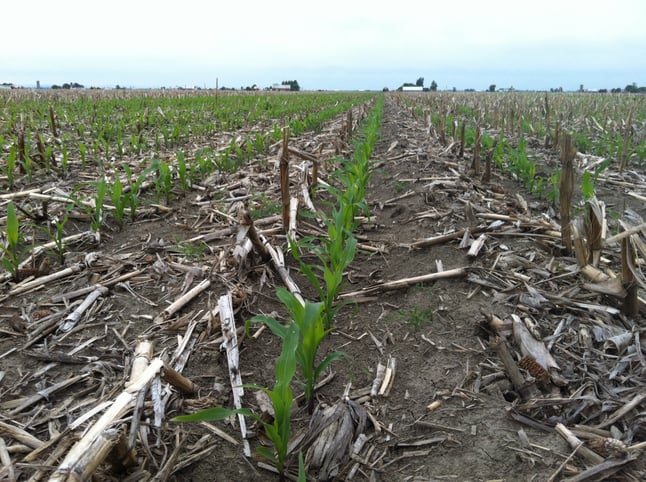Maximizing Productivity & Profits with Precision Technology
 For more than a decade, Scott Spare and his family have farmed with a precise eye on their productivity. Spare farms with his parents near Hiawatha, Kansas, raising corn and soybeans.
For more than a decade, Scott Spare and his family have farmed with a precise eye on their productivity. Spare farms with his parents near Hiawatha, Kansas, raising corn and soybeans.
Reduced tillage and a commitment to precision farming has proven vital to their operation. Every piece of equipment has some precision ag controller on it, which is especially important when planting into crop residue from the previous year’s crop. But Spare’s focus on precision goes well beyond steering control.
“We farm every acre for that acre’s potential,” Spare says.
Realizing that potential begins with soil samples. Spare says they sample after soybeans are harvested, then typically apply anhydrous ammonia using an offset knife rig for the next season’s corn crop. They also apply potassium, phosphorous, some zinc and magnesium as needed, along with liquid fertilizer in-furrow when planting. The attention to detail allows them to apply nutrients at prescribed variable rates to maximize potential.

“When we apply anhydrous, we look at the nitrogen holding capacity of the soil,” Spare adds. “We make maps according to soil types and apply nitrogen accordingly. We base seed populations off of those maps, too.”
When it comes to available technology, growers have their choice. Spare says their farm utilizes Ag Junction Outback MAX technology for anhydrous applications and section control and Precision Planting 20/20 for variable rate planting.
Since they began precision farming in 2003, the attention to fertility has paid off. Spare says fields that once held 8 parts per billion (ppb) of P, K, zinc and magnesium are now up to 60 ppb. That has reduced the need for starter fertilizer and cut costs. Fields that have been in their precision program for years had about a $45 per acre variable rate cost for applied P and K, while costs for new fields that haven’t been part of the fertility program were around $120 per acre the reach his 185-bushel corn yield goal.
Their program has led to greater productivity and better cost management.
“Instead of peaks and valleys, we’re getting more consistent averages across the field. We’ve been able to really pinpoint needs and manage costs,” Spare says.
Spare says farmers who are looking to adopt precision practices such as variable rate seeding and fertilizing should start slowly and build. Soil sampling to understand what nutrients are needed is the first step. Then, start a fertility program on a manageable number of acres to get familiar with what is needed before considering it for an entire operation.
“I’m a big proponent of soil sampling. You have to find out what’s going on so you can put money where you will get the most return,” Spare says. “Plant each acre for its potential.”

Farmers looking to begin utilizing variable rate and precision technology should think ahead. Spare advocates looking down the road to what they could be doing on their farm with the precision module they choose five years from now to help get a higher return on their investment. It can also be beneficial to engage the help of experts to get familiar with the technology and its potential once growers commit to utilizing variable rate technology.
“It depends on each farmer’s level of comfort, but I recommend working with an agronomist to start with because there is so much information,” Spare says. “Once they learn, they’ll be able to make their own decisions.”
After benchmarking soil tests have been done, the results will help determine what practices farmers can implement to show the greatest return.
Spare says that despite doing precision farming for more than a decade, there are still things to learn. He says for this coming growing season he is focused on refining nitrogen management practices.

Comment